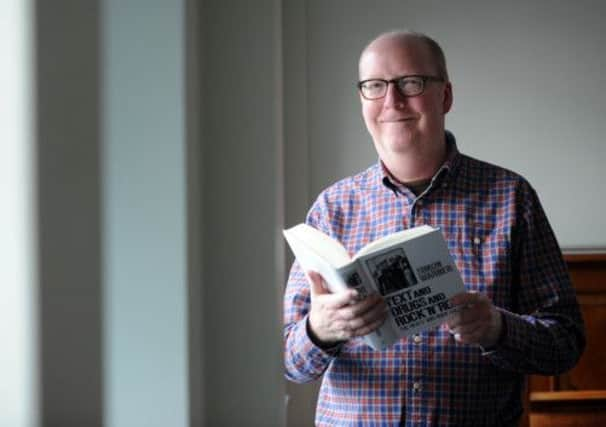How the spirit of the Beats still inspires rock musicians


BOB Dylan once said of Jack Kerouac’s novel On The Road: “It changed my life like it changed everyone else’s.”
While he may have been overstating the point a tad, there are few, if any, modern books that have enjoyed such a seismic cultural impact. Similarly, no other literary movement has had such a profound influence on rock music as the Beat generation.
Advertisement
Hide AdAdvertisement
Hide AdIt’s a relationship that Simon Warner, a music lecturer at Leeds University, explores in his impressive and well researched new book – Text And Drugs And Rock ‘N’ Roll: The Beats And Rock Culture. “Over the years I’ve noticed just how many of the major figures in rock culture from Bob Dylan and Paul McCartney, to Patti Smith and Kurt Cobain, took an interest in the Beat writers.
“And if you look at people like Kerouac, along with Allen Ginsberg and William Burroughs, they’ve had an impact on all kinds of music genres, from psychedelic bands and punk groups, all the way through to hip hop.”
Warner examines the different ways the Beats influenced rock music.
“People talk about the radical 60s, but there was little that rock stars were doing that hadn’t already been done by the Beat writers during the 1950s. By that I mean everything from experiments with narcotics to political activism and interest in Oriental religions.”
Advertisement
Hide AdAdvertisement
Hide AdHe says poets like Ginsberg and Lawrence Ferlinghetti, founder of the City Lights bookstore, were galvanising figures. “By the time the 60s came around bands like The Beatles and The Grateful Dead were making political statements, but Ginsberg had been speaking out ten years earlier.
“Unless the Beats had done what they did in a much more staid, conservative post war America, the doors wouldn’t have been open for the more radical thinking that became associated with the Hippies, the 60s counter culture and rock festivals like Woodstock.”
However, there are some interesting conflicts within this story. During the 60s, Kerouac was hailed as “king of the Beats” despite his opposition to much of the radicalism of the time.
“The Hippy movement pinned its colours to the Beat flag, especially Kerouac’s message of travel and the romance of the road even though he rejected what they advocated. Kerouac was staunchly Republican in his views and he thought LSD and the anti-war demonstrations were part of a communist plot to bring America down,” he says.
Advertisement
Hide AdAdvertisement
Hide Ad“But what’s interesting is when Punk came along and rejected the Hippy ideology, figures like Tom Verlaine, Patti Smith and Joe Strummer, in this country, still took an interest in the Beats.”
Burroughs, in particular, was held in high regard during this period. “His rather dark, dystopian views of the world chimed with the New Wave sound in New York at a time when the city had fallen into decline.”
Ginsberg, too, crossed the generational divide. “He was prominent during the 60s and by the late 80s he was hooking up with bands like Sonic Youth and the following decade with black artists and rappers.”
But why, more than half a century on, are the Beats still relevant? “Every year I get a new cohort of young students who are absolutely fascinated by the Beats and how they linked with people like John Lennon and Dylan. I think they’re amazed that in the monochrome 50s there was a strain of individual who had the courage to stand up for a different set of beliefs to the mainstream, and that still has great appeal today.”
Advertisement
Hide AdAdvertisement
Hide AdText and Drugs And Rock ‘N’ Roll: The Beats And Rock Culture, published by Bloomsbury, is out on May 9, priced £19.99.
And the beat goes on
The Beat writers emerged in the US during the 1950s, since when there has been a history of collaboration with rock musicians.
Allen Ginsberg toured with his friend Bob Dylan on the Rolling Thunder Revue in 1975 and worked with The Clash, while Paul McCartney played guitar on his album Ballad of the Skeletons.
British prog rock band Soft Machine was named after William Burroughs’ novel The Soft Machine.
Advertisement
Hide AdAdvertisement
Hide AdBeat poet and playwright Michael McClure was friends with Jim Morrison and members of The Doors and toured with Ray Manzarek.
Singer-songwriter Tom Waits collaborated with Burroughs and wrote Jack and Neal, a song about Jack Kerouac and Neal Cassady.
U2 frontman Bono has cited William Burroughs as one of his early influences.